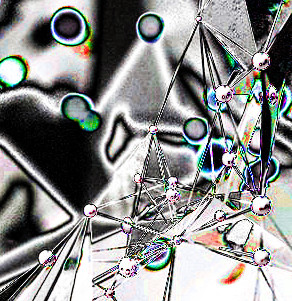New crystal order observed
 Researchers have discovered magnetic order in quasicrystals.
Researchers have discovered magnetic order in quasicrystals.
The findings of a new international study could open the door to a new generation of tailored magnetic materials.
The research team, including experts from the Australian Nuclear Science and Technology Organisation (ANSTO) and the University of Sydney have provided evidence of long-range magnetic order in materials known as quasicrystals for the first time.
Researchers had always assumed that every crystalline arrangement of atoms must have a pattern that repeats perfectly in all directions.
However, the 2011 Nobel Prize in Chemistry recognised the discovery of a whole new category of crystals, which are now known as quasicrystals.
Quasicrystals’ patterns do not repeat in the traditional way.
Since the discovery, researchers have been working to determine the physical properties of quasicrystals with icosahedral symmetry that relate to their unusual structure.
“This successful synthesis of ferromagnetic icosahedral quasicrystals is the culmination of more than 10 years of research in our laboratory,” says Professor Ryuji Tamura from the Tokyo University of Science.
“Nobody knows what kind of peculiar behaviour magnetic quasicrystals exhibit or how they can be exploited for the advancement of technology, but now we finally have the first step.
“Elucidating the properties of these magnetic quasicrystals will contribute greatly to the development of science.”
Neutron scattering measurements undertaken on the Echidna instrument at ANSTO’s Australian Centre for Neutron Scattering and the ISSP-GPTAS instrument at the JRR-3M research reactor in Japan confirmed that ferromagnetic ordering, in which the magnetic spins of the atoms were aligned, occurred in two synthesised alloy materials.
A ferromagnetic phase forms in the alloy made of gold (Au), gallium (Ga) and gadolinium (Gd) below 23 K and in an alloy made of gold, gallium, and terbium (Tb) below 16 K.
“Neutron diffraction is a very direct way to identify long-range magnetic order and I am pleased that the experiments on the Echidna diffractometer were successful and confirmed very exciting results. It is a fascinating class of materials and we look forward to further studies of magnetically ordered quasicrystals,” says Prof Max Avdeev, ANSTO Neutron Diffraction Group Manager.








 Print
Print